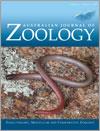Describing the spatial requirements of animals is central to understanding their ecology and conservation needs. I reviewed 115 studies describing the home ranges of Australian terrestrial vertebrates that were published during 2001–12. Understanding the features that characterise best practice can guide future studies. I aimed to: evaluate the adequacy of these studies, examine the use of current analysis techniques, examine the application of home-range knowledge to species’ management, and examine hypotheses that seek to explain the size and location of home ranges. The reviewed studies were unevenly distributed across taxa with a majority (68%) involving mammals compared with birds (12%), reptiles (19%) and frogs (1%). Many studies had various shortcomings, suggesting that they had not fully described home ranges; many (41%) involved 10 or fewer individuals, ≤50 locations per individual (44%), and spanned periods of ≤3 months (46%). Studies of short duration risk underestimating home-range area and overlooking seasonal habitat use. Global positioning system telemetry was used in 10% of Australian studies. Many were also of short duration. Despite frequent criticism in the literature, the Minimum Convex Polygon was the most frequently used home-range estimator (84% of studies), followed by the Fixed Kernel (45% of studies). Applying knowledge of home ranges appears to be underappreciated, with only 39% of studies explicitly aiming to address management or conservation issues. Only three studies tested hypotheses that may explain home-range characteristics. Resource (food and shelter) distribution and, in one case, its heterogeneity, shaped home-range characteristics. I found that most studies use the term ‘home range’ in an indiscriminate way. Only 11% of studies within the international literature used qualifying terms (e.g. seasonal, annual). Tracking period is shown to influence home-range estimates. Therefore, I recommend that qualifying terms be used more frequently to avoid confusion when referring to animal home ranges.
How to translate text using browser tools
25 May 2015
A review of home-range studies on Australian terrestrial vertebrates: adequacy of studies, testing of hypotheses, and relevance to conservation and international studies
Ross L. Goldingay
ACCESS THE FULL ARTICLE
<
Previous Article
|

Australian Journal of Zoology
Vol. 63 • No. 2
May 2015
Vol. 63 • No. 2
May 2015





